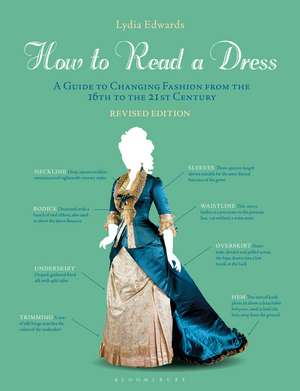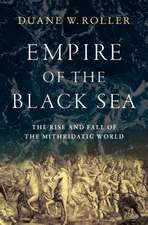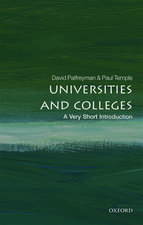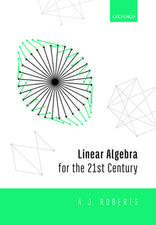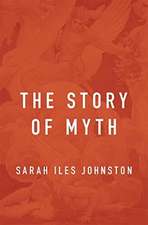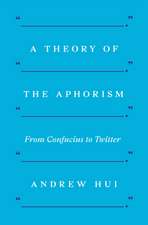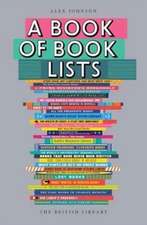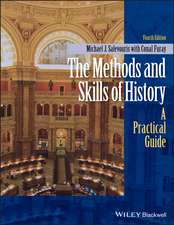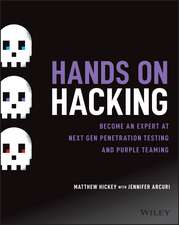How to Read a Dress: A Guide to Changing Fashion from the 16th to the 21st Century
Autor Lydia Edwardsen Limba Engleză Paperback – 17 noi 2021
Preț: 181.08 lei
Preț vechi: 191.39 lei
-5% Nou
Puncte Express: 272
Preț estimativ în valută:
34.66€ • 36.04$ • 29.00£
34.66€ • 36.04$ • 29.00£
Carte disponibilă
Livrare economică 22 februarie-08 martie
Livrare express 08-14 februarie pentru 54.96 lei
Preluare comenzi: 021 569.72.76
Specificații
ISBN-13: 9781350172210
ISBN-10: 1350172219
Pagini: 280
Ilustrații: 225 color illus
Dimensiuni: 189 x 246 x 18 mm
Greutate: 0.78 kg
Ediția:Revizuită
Editura: Bloomsbury Publishing
Colecția Bloomsbury Visual Arts
Locul publicării:London, United Kingdom
ISBN-10: 1350172219
Pagini: 280
Ilustrații: 225 color illus
Dimensiuni: 189 x 246 x 18 mm
Greutate: 0.78 kg
Ediția:Revizuită
Editura: Bloomsbury Publishing
Colecția Bloomsbury Visual Arts
Locul publicării:London, United Kingdom
Caracteristici
Illustrated with annotated color images throughout, this visual guide explains how dress styles changed from 1550 to 2020
Notă biografică
Lydia Edwards is a lecturer at Edith Cowan University, Perth, Australia and author of the companion book, How to Read a Suit (Bloomsbury 2020).
Cuprins
AcknowledgementsPrefaceIntroduction 1. 1550 - 1600 2. 1600 - 16993. 1710 - 17904. 1790 - 18375. 1837 - 18696. 1870 - 1889 7. 1890 - 19168. 1918 - 19299. 1930 - 194610. 1947 - 195911. 1960 - 197912. 1980 - 2020Glossary of TermsNotesBibliographyPhotographic CreditsIndexList of Fashion Designers
Recenzii
This comprehensive, inclusive and updated guide to dress history is richly illustrated in full colour and is supplemented with detailed annotations that identify the key stylistic trends from 1550 to 2020 - making it an essential text for the novice fashion historian.
Fashion lovers, students, and historians alike are all indebted to Edwards for teaching us how to interpret the meanings inscribed in the very clothes we wear and have worn for centuries. This new edition brings us into the 21st century with a potent reminder that not only can we all read a dress - we can all wear one too!
This updated and expanded edition is an invaluable resource in any costume history library. Dr. Lydia Edwards brings to life the evolution of the changing fashions, technological developments, and the social and material culture of the different decades.
For a knowledgeable introduction that has plenty of eye candy alongside its scholarship, Lydia Edwards' How to Read a Dress hits the spot.The curated collection, featuring everything from funeral finery to department-store finds, offers [a...] fascinating fashion primer that invites you to make connections across centuries, to wonder about the ways huge social shifts are reflected in everyday life, and tips you off about the placement of shoulder seams. Whether you're a costume nerd or just casually curious, How to Read a Dress will give you some insights into the language of dress.
The general principle of this book is excellent and provides a much-needed overview ... [It] is a perfect introduction to the world of dress history and provides a good stimulus for further study. For those with specialist knowledge of particular periods, it provides a quick and easily accessed reference for the main points of other periods.
This original, accessible take on fashion history is packed with color images, and each example garment annotated with terminology, key elements of the shape and construction, and other details of note.
Those looking for a detailed, object centered and carefully researched study of historic dress will find a satisfying, richly illustrated guide for looking at clothes.
Lydia Edwards's How to Read a Dress is a detailed, practical, and totally beautiful guide to the history of this particular form of clothing from the 16th to the 20th centuries.
Ultimately, this is an excellent book for scholars of fashion history, costume designers and makers, and really anyone looking to improve their ability to determine the period of a given dress.
This is a beautiful, well-written book. The photos are a joy to study, and I finished it wishing it were twice as long.
Sashays down the historical catwalk, examining women's costume from the 16th to the 20th century . It is fascinating to rifle through this pictorial dress-up box and see styles come and go, and then imagine what you might like to wear.
Using examples from lesser known international collections, this well-illustrated and informative book tracks the evolution of the dress through expert analysis and description. It will be an invaluable guide for anyone with an interest in dating and contextualizing the dress as a garment within the culture of fashion.
This appealing and accessible work offers a fresh perspective on fashion history from 1550 to 1970. Images of surviving garments from museums in Australia, Canada, Europe and the United States of America have been annotated to highlight and elucidate key fashionable details. This book would make an excellent companion to The Dress Detective.
This book explores the realities of what we can and cannot know about a garment, particularly in terms of the why and when of its creation. The author's concept of the fluidity of time is critical to our better understanding of how individuals approach dress.
Fashion lovers, students, and historians alike are all indebted to Edwards for teaching us how to interpret the meanings inscribed in the very clothes we wear and have worn for centuries. This new edition brings us into the 21st century with a potent reminder that not only can we all read a dress - we can all wear one too!
This updated and expanded edition is an invaluable resource in any costume history library. Dr. Lydia Edwards brings to life the evolution of the changing fashions, technological developments, and the social and material culture of the different decades.
For a knowledgeable introduction that has plenty of eye candy alongside its scholarship, Lydia Edwards' How to Read a Dress hits the spot.The curated collection, featuring everything from funeral finery to department-store finds, offers [a...] fascinating fashion primer that invites you to make connections across centuries, to wonder about the ways huge social shifts are reflected in everyday life, and tips you off about the placement of shoulder seams. Whether you're a costume nerd or just casually curious, How to Read a Dress will give you some insights into the language of dress.
The general principle of this book is excellent and provides a much-needed overview ... [It] is a perfect introduction to the world of dress history and provides a good stimulus for further study. For those with specialist knowledge of particular periods, it provides a quick and easily accessed reference for the main points of other periods.
This original, accessible take on fashion history is packed with color images, and each example garment annotated with terminology, key elements of the shape and construction, and other details of note.
Those looking for a detailed, object centered and carefully researched study of historic dress will find a satisfying, richly illustrated guide for looking at clothes.
Lydia Edwards's How to Read a Dress is a detailed, practical, and totally beautiful guide to the history of this particular form of clothing from the 16th to the 20th centuries.
Ultimately, this is an excellent book for scholars of fashion history, costume designers and makers, and really anyone looking to improve their ability to determine the period of a given dress.
This is a beautiful, well-written book. The photos are a joy to study, and I finished it wishing it were twice as long.
Sashays down the historical catwalk, examining women's costume from the 16th to the 20th century . It is fascinating to rifle through this pictorial dress-up box and see styles come and go, and then imagine what you might like to wear.
Using examples from lesser known international collections, this well-illustrated and informative book tracks the evolution of the dress through expert analysis and description. It will be an invaluable guide for anyone with an interest in dating and contextualizing the dress as a garment within the culture of fashion.
This appealing and accessible work offers a fresh perspective on fashion history from 1550 to 1970. Images of surviving garments from museums in Australia, Canada, Europe and the United States of America have been annotated to highlight and elucidate key fashionable details. This book would make an excellent companion to The Dress Detective.
This book explores the realities of what we can and cannot know about a garment, particularly in terms of the why and when of its creation. The author's concept of the fluidity of time is critical to our better understanding of how individuals approach dress.
